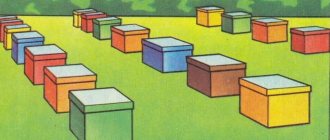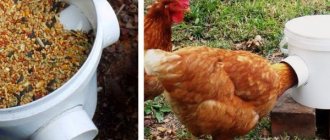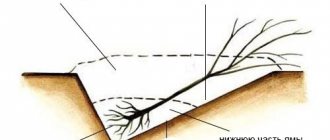What is beekeeping?
This form of beekeeping has been known since ancient times. Moreover, it was typical specifically for the inhabitants of the Slavic lands due to the numerous forests.
On-board beekeeping, or, as it is more often called, beekeeping, is today an almost forgotten craft, the goal of which is to produce honey, but not to destroy the bees. Its essence is that for the swarm to settle, special hollows in trees were organized or imitations were tied to them, in the form of logs with a hollowed out middle.
The name of the fishery comes from the ancient term “bort”, which means “hollow”. Later, this word began to be used to name a place for a bee swarm in a tree or its analogue from a log. Sometimes this progenitor of the modern hive was called a “deck” or “doop”.
This trade was common among many Slavs: Belarusians, Lithuanians, Poles, Russians, Ukrainians, etc. That is why very similar names have been preserved in each of their languages: beekeeping, bitininkystė bartnictwo, beekeeping, beekeeping.
Instructions
In order to make the bead with your own hands, you need to process the inside of the cut trunk from the inside. This must be done with special steel brushes of different diameters.
First, process with a smaller size, and then finish with a larger one. If copper brushes are used, then the stripping will not be as smooth as when using steel ones. After this, the inside of the tree must be cleaned with emery cloth.
It is necessary to designate the location of the entrance, since it needs to be made in such a place that it would be convenient to pick up the products produced by the bees. On the contrary, there is always brood, so if you decide to cut off the tongue at the bottom, then the entrance must be made from above, but in order to get numerous brood, then you need to choose the location of the entrance closer to the bottom. The entrance hole is best made with tools by drilling a hole.
Beekeepers know that bees are reluctant to occupy an uninhabited dwelling, but will live where there has already been activity of beekeeping colonies. It is imperative that the guides inside the hive be set correctly, otherwise its inhabitants themselves will build honeycombs in a place where it will be more difficult to get honey.
Rub the walls with wax - this will be an effective way to deceive the bees that this housing has already been used and set the correct guidelines. You need to nail the sides 10 cm below the lid, then make holes to set the guides. Using the instructions on how to make a beehive, you can build it with your own hands, move bee families into this dwelling and collect fragrant, healthy honey.
How does beekeeping differ from beekeeping?
Although the fishery under study is the progenitor of the modern economic industry specializing in honey production, it has a number of differences.
- In aerial beekeeping, swarms remained in their natural habitat - forests. Thanks to this, the bees felt more relaxed. On the other hand, this was very inconvenient for beekeepers, since it was not possible to constantly monitor the bees and protect them from attacks by wild animals or simply robbers.
- Modern hives can be easily transported, which is what beekeepers take advantage of when they take them out into the wild during the flowering period. For the winter, it’s easy to take them closer to home.
- In beekeeping, the main part of the hive is made up of frames, which were not used in decks and sides.
- There are more than a dozen hive design options. Almost each of them makes it possible to easily reach the honeycombs and extract honey and wax, causing minimal losses to the bees. While the sides could not be disassembled.
- In addition to all of the above, modern beekeepers, unlike their ancestors, care about the health of their swarm of bees. To do this, they use various drugs that protect their “pets” from diseases that previously killed them.
Making a deck for bees with your own hands
Anyone can make a deck with their own hands. It is not difficult to build it from a log so that bees can live in it. The following materials will be required:
- a log that can be found in the forest, optimally - birch (you can also take linden, ash, aspen, oak), with a diameter of 90 cm;
– wood cuts 6 cm wide – 2 pieces;
– cotton fabric;
– chisel;
– electric or chainsaw;
– a set of nails;
– loop holders.
Important: you should choose dried logs so that the wood does not rot or become moldy.
What type of tree is best to use for beekeeping?
Although bees are quite small creatures, they have always had their own preferences, especially regarding their habitat. That is why only certain types of trees were suitable for creating sides. By the way, these traditions were inherited by modern beekeeping, and therefore modern hives are made of pine and cedar, less often - of willow, poplar or willow.
But let's return to the ancient craft, so what kind of tree is suitable for beekeeping?
Most experts in this field agree that pine was the favorite tree. Also, in addition to the above materials used today for the manufacture of hives, in the old days the sides were placed in oak and ash trees.
It is worth remembering that in addition to the “preferences” of the bees, it was necessary to take into account the strength of the tree itself. Indeed, to protect themselves from wild animals, families settled at a height of several meters above the ground.
Dimensions and drawing
In order for the future house to be harmoniously built, it is worth paying attention to the parameters of the entire structure. It is better to work scrupulously on the drawing than to redo everything later.
- Use a cutter to cut circles from a wooden log, from the ends, several centimeters wide, or take a couple of boards for this.
- The trunk is sawed with a chainsaw and the wood is removed using a chisel to create a hollow 6 cm in diameter for the hive.
- The hollow is rubbed with coarse sandpaper for smoothness.
- The holes at the top and bottom are closed with saw cuts, the top one is nailed, the bottom one is secured with hinges. This will help insects get inside the hollow in the future. The lids of the sides are immediately covered with fabric so that the bees build honeycombs on it.
- Using a drill you need to drill a tap hole - diameter 9 mm.
Important: if you don’t have a whole 1.5 m log, you can vertically connect several small scraps using self-tapping screws.
- The inside walls are smeared with propolis mass, which lures insects to colonize the new house.
- The bead is secured to the tree trunk using ropes or to a spear between large branches.
What should a good beekeeper be like?
In the modern world, almost anyone can become a beekeeper if they have a place to keep hives, some money and free time to do it all. This trade now does not require special skills and physical abilities, but in the old days it was not so.
Each beekeeper (that’s what those who raised bees were called) had to have good health, be strong, hardy and have a good understanding of plants.
As mentioned above, all types of sides were hung high above the ground, and in order to reach them, it was necessary to have dexterity and strength. After all, it was inconvenient to carry ladders with you, which meant that you had to climb trees with the help of a leather cord and devices similar in design to modern “claws” of electricians.
But on the farm of any self-respecting beekeeper, as a rule, there were dozens of bees, and each of them required attention and inspection. That is why ancient beekeepers were always famous for their strength and dexterity - there was no other way in this craft.
Another important characteristic of each specialist in this field was deep knowledge of botany. They were necessary to know where, and most importantly, when exactly to place the beads in order to obtain honey and wax of the best quality. That is why many beekeepers were also excellent herbalists. After all, they knew when plants and trees bloom and bear fruit, and how they affect the human body.
Over the centuries of beekeeping, the ancient Slavs developed several specialized tools that are still used today. In addition to a special hatchet, chisel, scrapers and knives for forming hollows of the desired shape and caring for them, already in the 10th century a protective mask woven from horsehair began to be widely used.
Structural varieties
An apiary log is a housing for a bee family in the form of a wooden hollow. To make honeycombs inside, fix a couple of poles. Honey is collected through special holes using inserted sticks.
- Side parameters – 1 m (length) x 0.5 m (width).
- Number of nests – 1-3 (harmless for plants).
- The height of the lower tier is no more than 4.5 m, in exceptional cases – up to 15 m.
- The highest quality honey is obtained from the upper levels of the borti
- The approximate volume of production from a hollow is 2.5 buckets.
- The service life of the board is over 300 years.
The emergence of the fishery
Having understood the very concept of “beekeeping”, it is worth studying its history in more detail. As you know, humanity learned about the value of honey several thousand years ago. That is why in almost all ancient cultures this product and the insects that produced it were highly valued, and in Ancient India they were even deified.
Long before the beginning of our era, Egypt, Assyria, Greece, Rome and China managed to tame bees.
However, beekeeping was precisely a Slavic invention. This was facilitated by the presence of numerous forests. Among most eastern peoples, bee families settled in rock crevices. Although, in fairness, it is important to recognize that the inhabitants of the jungle also had a similar tradition - hanging logs with bee families near the trees.
As for beekeeping in Ancient Rus', it was during this period that it evolved from a simple hobby to a real industry. Previously, trees with bees in order to extract honey were simply set on fire, and the insects died. Gradually, the ancestors came to the conclusion that they could try to tame bee colonies rather than kill them.
At first, this was done in hollow trees, which is where the name of the craft came from. Gradually the Slavs came to the conclusion that they could cut through their own sides. And even later, decks from other trees began to be used in this role.
It is generally accepted that by the 4th century. On-board beekeeping has finally taken shape and has begun to gain momentum. Thus, the Byzantine author Polybius already noted that the main export item of the Slavic tribes was honey and wax.
Beekeeping in Kievan Rus
In the following centuries, this fishery continued to develop. Entire villages began to emerge that specialized in bee breeding. With the emergence of Kievan Rus, a whole industrial class was created - beekeepers.
Their fishery was taken under the protection of the law and strictly guarded from encroachment. So, according to Pravda Yaroslav, huge fines had to be paid for causing harm. And in later centuries, damage to side trees or encroachment on someone else’s honey was even punishable by death (“Lithuanian Statute”).
In return, beekeepers had to pay tribute in the form of a tenth of the collected honey and wax. Moreover, the latter was valued much higher, despite the fact that until the 19th century the Slavs had no other sweet product.
The value of on-board honey
This variety has significant differences from all other varieties. The unique properties of wild beet honey are due to its environmental purity. In addition to nectar and pollen from a wide variety of wild herbs, honey does not contain artificial sugars or antibiotics, since human intervention is minimal (insects are not additionally fed or treated).
The honeycombs are collected and pumped out the sweet product only once a year, in the fall, due to which it has time to evaporate excess moisture, thickens, and the smell becomes concentrated. Due to manual pressing, the product has a high content of wax, bee bread, and propolis.
Wild honey is dark in color, viscous in consistency, free from excessive sugariness, and has some sourness. The crystallization process is long.
Important! The increased content of the most valuable vitamin B9 (folic acid) distinguishes wild bee honey from numerous varieties of sweet product.
Beekeeping in the Russian Empire
In the period from the X to the XVII centuries. beekeeping flourished and brought in huge income. And this was not affected by wars, or the fall or emergence of new states.
When the Principality of Moscow became the strongest in the region, this did not affect this fishery in any way. However, when, through the efforts of Peter I, the state finally turned into the Russian Empire, a decline began in the history of beekeeping.
This was due to the economic policy of this king. Under him, massive deforestation began in the European part of the country. Moreover, this was done not only to build a fleet, but also for export abroad.
Since the area of forests near villages and cities decreased, beekeepers physically had nowhere to raise bees, and the amount of honey they received decreased, as did its quality.
On the other hand, such a difficult situation forced representatives of this trade to evolve, which contributed to the emergence of log beekeeping.
The decline of beekeeping
In the 19th century A technology for producing sugar from beets was developed. This product turned out to be a cheaper, although less useful analogue of honey, which allowed it to displace honey on the market.
During the same period, the methodology for making candles from stearin and paraffin was refined. Such products were cheaper than wax products.
Thus, the demand for the products of beekeepers began to fall, and for many of them it became unprofitable to practice their craft.
In addition, in 1814, a beekeeper from Ukraine Pyotr Prokopovich invented a frame hive. This device was a real breakthrough in this area, and marked the decline of both beekeeping and convict farming.
Newly designed hives made it possible to collect more honey, while requiring significantly less cost and time. Thanks to this, they quickly spread and became popular in all Slavic lands, finally “dealing with” beekeeping by the beginning of the 20th century.
Where is this fishery practiced today?
At the moment, beekeeping is almost a forgotten art. The main problem is that it is too labor intensive compared to a modern apiary, and the amount of honey and wax collected is much less.
Of course, there are numerous legends about the extraordinary healing properties of on-board honey, but at the moment they have not been found to be practically confirmed. That is why this fishery is rather a tribute to history.
Meanwhile, there are several other places where it is practiced. Thus, in the Bashkir Shulgan-Tash nature reserve there are still beet trees with wild Central Russian forest bees.
Another place where this fishery is still alive is the Belarusian village of Kudrichi. Here, old-timers still practice beekeeping the old fashioned way.
It is also known that today there are two hereditary beekeepers living in Lithuania who have not abandoned the rare craft. There are four such specialists in Poland.
On the territory of modern Ukraine, craftsmen in Polesie are actively involved in beekeeping. These are Sergey Zhila, Vladimir Androschovich and Pavel Zinkevich from the village of Selezovka, where the nature reserve is located, as well as Yuriy Starinsky from the village of Knyazevka, Rivne region.











